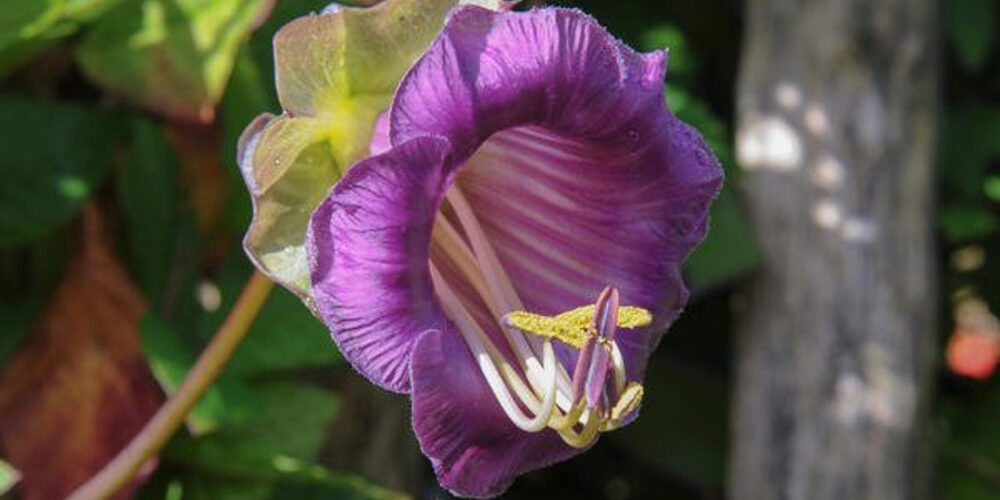Growing Cup and Saucer Vine

A fast-growing flowering vine with cup-shaped purple (or sometimes white) flower, cup-and-saucer vine will quickly camouflage a fence or trellis and also can be trained as a hedge.
Cobaea scandens hails from warm climated (it’s at home in Mexico and Venezuela) and should be grown as an annual in regions colder than USDA growing zone 9.
With its speedy growth rate and cloaking tendencies, cup-and-saucer brings to mind another purple climber, morning glory, but C. scandens has longer-lasting flowers and stems that with beautiful draping effect, making it a favorite for floral arrangements as well.
Before planting, make sure cup-and-saucer is not considered an invasive weed in your region. Another alternative climber to consider is Passionflower. And if it’s an elegant perennial vine you’re looking for, well-behaved Clematis will tolerate colder winters.
An interesting and unusual plant which should find a place is Cobaea scandens, which sounds more attractive under its English name of cups-and-saucers.
When Vita Sackville-West recommends a plant, I listen. This perennial climbing vine has flowers shaped like tea cups (which “sit” in more petals shaped like saucers) is a warm-weather plant that hails, originally from Mexico. In colder climates, consider it an annual but don’t worry—it can easily 10 feet in a single season
Flowers change color as they bloom. When they open, cup-and-saucer flowers are a creamy white; then they turn apple-green, then they develop a slight mauve blush, and end up a deep purple.
The ideal place for it is a trellis nailed against a wall, or a position at the foot of a hedge, when people will be much puzzled as to what kind of a hedge this can be, bearing such curious short-stemmed flowers, like a Canterbury bell with tendrils
Before you plant cup-and-saucer vine, do some research. C. scandens can become invasive in some regions (and by the way is not welcome in New Zealand). In that habit, it resembles another purple climbing vine, morning glory.
Planting
- Grow cup-and-saucer vine as a cloak on an ugly chain link fence, or on a trellis to frame a doorway.
- Start training a vine when it is young and malleable. Wherever you pinch off a stem, expect lateral offshoots.
- Plants with grassy textures make good visual companions for cup-and-saucer vine. Ground covers such as lilyturf (Liriope) and feathery ornamental grasses such as graceful maiden grass (Miscanthus) are good choices.
Care
- A warm-weather plant, C. scandens is winter-hardy only in USDA growing zones 9 to 11.
- Plant cup-and-saucer vine in full sun, in a site with well-drained soil.
- Easy to start from seed, cup-and-saucer vines can be started indoors and transplanted to the garden after the last frost date.
Website: www.gardenista.com